Download Pdf [2,32 MB] - MTU Aero Engines
Download Pdf [2,32 MB] - MTU Aero Engines
Download Pdf [2,32 MB] - MTU Aero Engines
You also want an ePaper? Increase the reach of your titles
YUMPU automatically turns print PDFs into web optimized ePapers that Google loves.
Technology + Science<br />
The repair mavens<br />
By Nicole Geffert<br />
While engineers elsewhere may resort to virgin parts to replace worn or damaged ones, the specialists<br />
at <strong>MTU</strong> <strong>Aero</strong> <strong>Engines</strong> prefer to repair, also when the parts involved are complex. They produce<br />
high-grade reconditioned parts that in terms of quality and reliability are as good as new. <strong>MTU</strong>’s<br />
customers appreciate the expertise involved: the company’s innovative high-tech repair processes<br />
indeed slash their maintenance costs and ensure the repaired parts perform flawlessly and the lives<br />
of their engines are extended.<br />
A technology leader and independent provider<br />
of engine maintenance (MRO) services,<br />
<strong>MTU</strong> vigorously presses ahead with the<br />
development of innovative repair techniques.<br />
“We aim to be and remain a technology<br />
leader in our market,” says Bernd Kessler,<br />
president and CEO commercial maintenance.<br />
<strong>MTU</strong> is clearly a step ahead of its<br />
competition. “We’re combining the knowhow<br />
of an engine manufacturer, one that<br />
develops materials and components, with<br />
our MRO background,” explains Bernd Kriegl,<br />
who supervises MRO repair engineering.<br />
“Our winning approach is we’re transitioning<br />
our design and manufacturing know-how to<br />
our repair activities, and vice versa. Typically,<br />
we’re world-class in blisk technology and so<br />
it stands to reason we pretty well know also<br />
how to repair these integrally bladed disks.”<br />
<strong>MTU</strong> experts have found a reliable repair<br />
solution even for heavily damaged blisk<br />
blades: patching. “We use an adaptive cutting<br />
process to remove the damaged portion<br />
of blade tip or edge by fully automated precision<br />
machining. That leaves the load-bearing<br />
structure of the blade intact,” explains<br />
Winfried Lauer, senior consultant, military<br />
engines. In a next step the blade is then<br />
restored to its original shape by welding.<br />
For the repair of the blisk’s titanium components,<br />
tungsten plasma arc welding has<br />
proved a trusted approach, because it produces<br />
a sound weld. The fully automated<br />
welding process is performed in an oxygenfree<br />
atmosphere to prevent oxidation. “The<br />
reconditioned component is 100 percent free<br />
Blisk repairs are among the most innovative practices<br />
in the industry: shown here are preparations for<br />
tungsten plasma arc welding at the Munich location.<br />
10 REPORT REPORT 11


![Download Pdf [2,32 MB] - MTU Aero Engines](https://img.yumpu.com/11154939/6/500x640/download-pdf-232-mb-mtu-aero-engines.jpg)


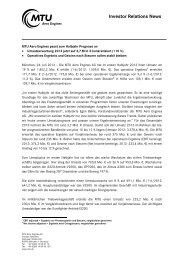
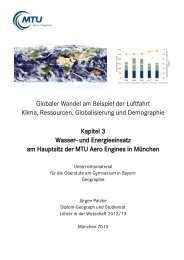
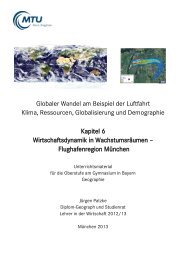
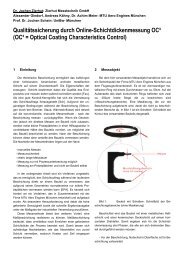
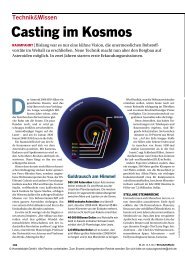

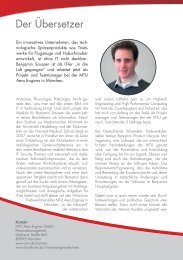
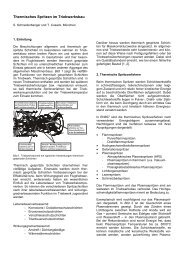
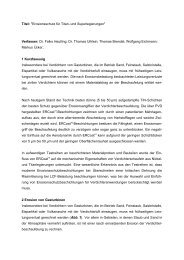


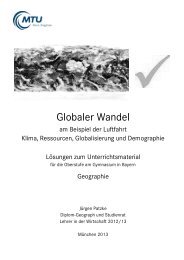
![Download PDF [5,37 MB] - MTU Aero Engines](https://img.yumpu.com/21945461/1/190x125/download-pdf-537-mb-mtu-aero-engines.jpg?quality=85)